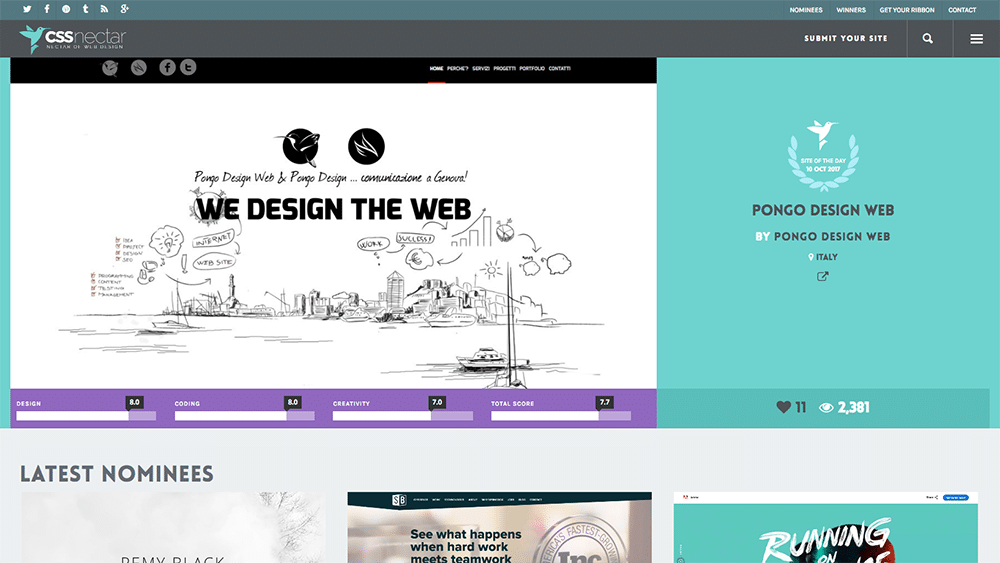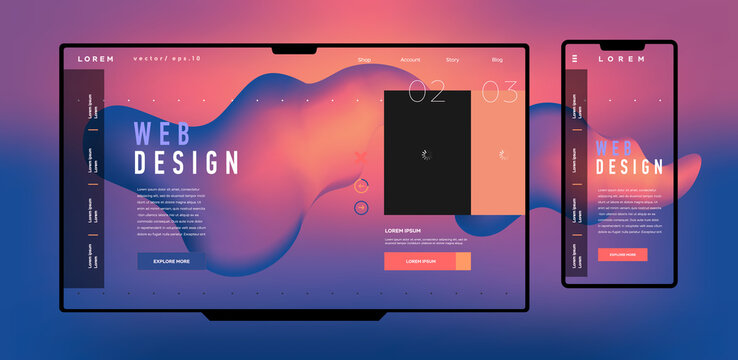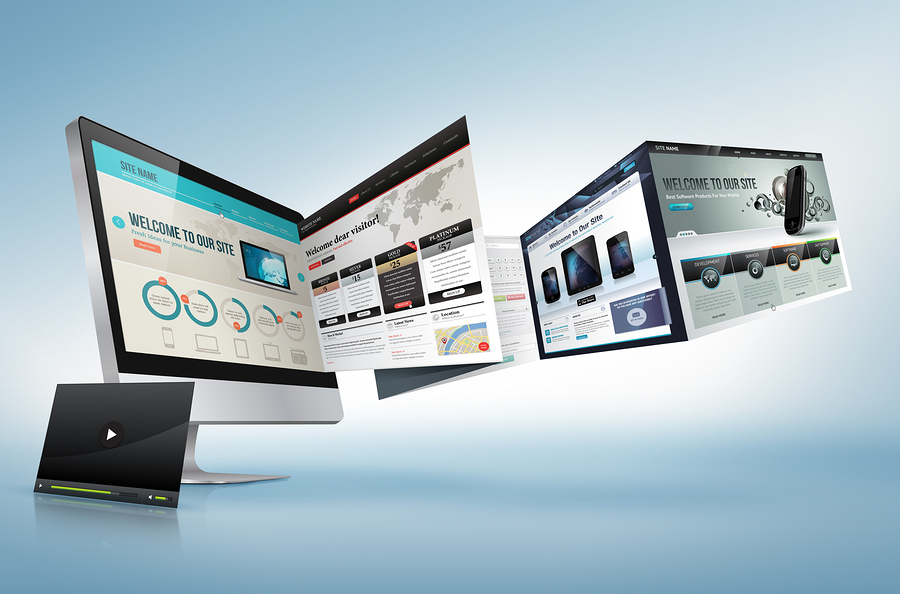Important Principles of Web Site Style: Creating User-Friendly Experiences
By focusing on user demands and choices, designers can cultivate involvement and contentment, yet the ramifications of these principles expand past mere capability. Comprehending exactly how they intertwine can substantially impact a site's total efficiency and success, triggering a more detailed evaluation of their individual functions and cumulative influence on customer experience.

Relevance of User-Centered Style
Prioritizing user-centered layout is necessary for producing effective websites that fulfill the requirements of their target audience. This method places the customer at the forefront of the layout procedure, guaranteeing that the site not just functions well however also reverberates with users on a personal level. By recognizing the users' objectives, behaviors, and choices, developers can craft experiences that foster involvement and fulfillment.

Moreover, embracing a user-centered design philosophy can cause enhanced accessibility and inclusivity, satisfying a varied audience. By taking into consideration different customer demographics, such as age, technical proficiency, and cultural backgrounds, developers can develop web sites that are welcoming and functional for all.
Eventually, prioritizing user-centered design not just improves customer experience but can likewise drive vital business results, such as increased conversion rates and client commitment. In today's competitive digital landscape, understanding and focusing on customer demands is a critical success aspect.
Instinctive Navigating Frameworks
Efficient website navigation is commonly a critical consider improving customer experience. Intuitive navigation structures allow customers to locate information quickly and effectively, reducing aggravation and boosting interaction. An efficient navigating food selection should be simple, logical, and constant across all web pages. This allows customers to anticipate where they can find certain content, thus promoting a smooth browsing experience.
To develop user-friendly navigation, designers must prioritize clearness. Tags ought to be familiar and detailed to customers, staying clear of jargon or unclear terms. A hierarchical structure, with primary categories leading to subcategories, can better help customers in recognizing the partnership in between different areas of the site.
In addition, incorporating visual cues such as breadcrumbs can guide individuals through their navigation path, enabling them to easily backtrack if required. The inclusion of a search bar additionally boosts navigability, giving individuals guide accessibility to content without needing to browse with multiple layers.
Responsive and Flexible Designs
In today's electronic landscape, making sure that sites operate effortlessly throughout different gadgets is important for customer fulfillment - Website Design. Adaptive and receptive layouts are two essential approaches that enable this capability, dealing with the diverse series of display dimensions and resolutions that customers may experience
Receptive layouts utilize liquid grids and flexible images, permitting the web site to instantly readjust its elements based on the display dimensions. This method gives a regular experience, where content reflows dynamically to fit the viewport, which is specifically helpful for mobile customers. By making use of CSS media queries, designers can produce breakpoints that maximize the format for various tools without the need for separate styles.
Flexible formats, on the other hand, utilize predefined designs for certain display dimensions. When a user accesses the site, the web server detects the device and serves the appropriate format, making sure a maximized experience for differing resolutions. This can cause much faster packing times and enhanced performance, as each layout is tailored to the gadget's capacities.
Both flexible and responsive designs are critical for boosting customer interaction and fulfillment, inevitably adding to the web site's general effectiveness in meeting its purposes.
Constant Visual Pecking Order
Establishing a regular visual pecking order is critical for guiding customers through a website's web content. This concept guarantees that details exists in a way that is both appealing and intuitive, permitting individuals to easily browse and understand the product. click resources A well-defined hierarchy employs numerous design components, such as size, spacing, shade, and contrast, to produce a clear difference between various sorts of material.

In addition, consistent application of these aesthetic hints throughout the website promotes familiarity and trust. Customers can rapidly find out to recognize patterns, making their communications my response a lot more effective. Inevitably, a strong visual power structure not just enhances customer experience but likewise boosts total website functionality, encouraging much deeper involvement and promoting the desired actions on a website.
Ease Of Access for All Customers
Ease of access for all users is an essential aspect of web site style that makes certain every person, no matter their impairments or capabilities, can involve with and gain from online material. Creating with access in mind includes applying practices that accommodate diverse user needs, such as those with visual, auditory, motor, or cognitive impairments.
One necessary guideline is to follow the Internet Material Access Standards (WCAG), which supply a structure for developing obtainable electronic experiences. This consists of utilizing adequate color contrast, offering text choices for photos, and making certain that navigating is keyboard-friendly. In addition, using responsive design techniques ensures that internet sites work successfully throughout different devices and display dimensions, better improving availability.
One more vital variable is using clear, succinct language that prevents jargon, making material comprehensible for all users. Involving individuals with assistive innovations, such as screen readers, needs careful focus to HTML semiotics and ARIA (Accessible Abundant Web Applications) roles.
Inevitably, focusing on access not just satisfies lawful responsibilities but additionally broadens the audience reach, promoting inclusivity and enhancing customer complete satisfaction. A commitment to access shows a devotion important source to producing fair digital settings for all individuals.
Verdict
In conclusion, the necessary principles of web site layout-- user-centered layout, instinctive navigation, responsive formats, regular visual pecking order, and accessibility-- collectively add to the production of user-friendly experiences. Website Design. By prioritizing individual demands and ensuring that all individuals can successfully engage with the website, designers boost functionality and foster inclusivity. These concepts not just enhance individual satisfaction but also drive favorable business outcomes, eventually demonstrating the important importance of thoughtful website design in today's digital landscape
These techniques give important insights into user expectations and pain points, making it possible for developers to customize the website's attributes and material accordingly.Effective website navigating is often a vital factor in enhancing user experience.Establishing a consistent visual power structure is essential for assisting individuals through a site's content. Ultimately, a strong visual power structure not just improves individual experience however also improves total website usability, encouraging much deeper interaction and assisting in the preferred activities on a website.
These concepts not only improve customer contentment yet likewise drive positive organization results, ultimately showing the important value of thoughtful site layout in today's digital landscape.